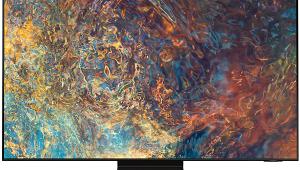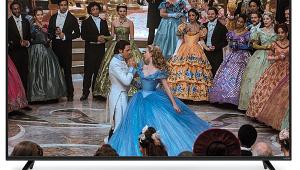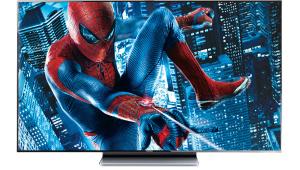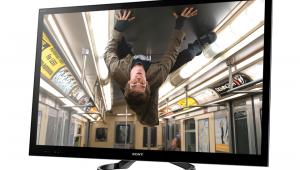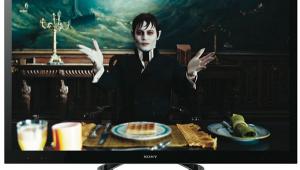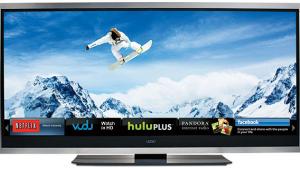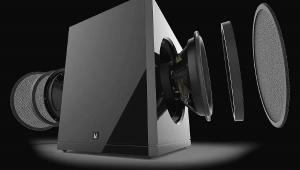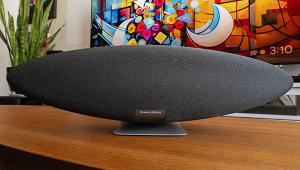Vizio VF551XVT LCD HDTV Page 2
Two audio features from SRS are intended to enhance this TV’s sound. TruSurround HD is said to create a simulated surround experience, while TruVolume tames the sometimes wildly disparate volume levels between programs and commercials and even between channels. Another welcome audio feature is Lip Sync, which lets you delay the audio so it synchronizes with the video. Adjustable Lip Sync compensation is widespread in A/V receivers, but it’s rare for an HDTV’s onboard sound.
One of the nicest features of all Vizio HDTVs is the company’s free one-year, in-home warranty. In addition, for all LCD HDTVs that measure 30 inches and larger, the company’s Zero Bright-Pixel Defect Guarantee replaces the entire TV if even one pixel sticks on. Vizio also offers free lifetime technical support by e-mail or phone. Such dedication to customer service is rare and laudable in today’s consumer marketplace.
 User Interface
User Interface
The universal remote is the same as the one Vizio included with several of its previous models. It’s relatively large, with a nicely rubberized underbelly. It can also control up to four devices including the TV. The buttons are well separated but rather small and mostly the same size and shape. The remote is backlit, and the labels are on the buttons themselves, so you can identify them in the dark when the backlight is on. However, a few buttons have multiple functions, and the secondary labels are on the body of the remote with no illumination.
Unlike virtually all other TV remotes, this one has dedicated input-selection buttons—sort of. Actually, each type of input has its own button. For example, the HDMI button cycles through the five HDMI inputs when you press it repeatedly. Still, this is far better than the usual single button that cycles through all inputs or calls up an onscreen list.
I don’t like the Vizio’s menu system much. The first level only has the major categories. You can’t see the parameters in the selected category except the picture and audio preset modes, and then you can only see them when the category is highlighted. The basic controls are in the second level, but again, you can only see the value that is highlighted.
On the plus side, I’m happy to report that when you adjust a picture control, it drops to the bottom of the screen and the rest of the menu disappears. This way, you can see the image you’re trying to tweak. This is a big improvement over previous models that kept the menu on the screen during adjustments.
Setup and Testing
Setting the VF551XVT’s basic picture controls was no problem. The Movie mode proved to be the closest to accurate, although the TV still required a full gray-scale calibration. Below black and above white were clearly visible from all sources, which made it easy to set the Brightness and Contrast controls—especially since the menu disappears when you make these adjustments. Interestingly, a full black field didn’t look all that deep, even though the black level measured quite low, and it was brighter in the corners than in the center.
When I looked at the Spears & Munsil High Definition Benchmark Blu-ray Edition test disc at 1080i, the deinterlacing content originally captured as progressive but stored as interlaced looked superb. This was especially true of 3:2 film-based material. The 2:2 video material exhibited occasional moments of moiré, but it was otherwise very stable. With material that was originally captured or created as interlaced, jaggies on the rotating bar were nearly invisible. But the circle composed of 1-pixel alternating black and white lines was full of macroblocking artifacts when Smooth Motion (frame interpolation) was enabled.
I saw some ringing (white halos) around the rigging of the sailing ship at the previously determined Sharpness setting, so I reduced it to 1, even though there was still a bit of ringing. (A Sharpness setting of 0 softened the image noticeably.) Mixed film and video text crawls looked fine. The film content looked slightly jerky, but there were no jaggies or artifacts in pans across images with fine detail.
To test frame interpolation, I always turn to an unpublished Blu-ray test disc called FPD Benchmark. The Vizio’s Smooth Motion function certainly sharpened motion detail, but as with many frame-interpolating LCDs, it caused some smudging artifacts in a moving resolution pattern. All the other tests are clips of real-world material, and they looked fine. Smooth Motion clearly gives the image a video-like look, but I saw little difference between its settings.
On FPD Benchmark, a static white label on a black background preceded each section and individual test, and I saw some problems here. For one thing, the background’s black level appeared higher than a full black field. Also, as the text faded out, the black level suddenly dropped and then jumped back up when the next label appeared.
- Log in or register to post comments
